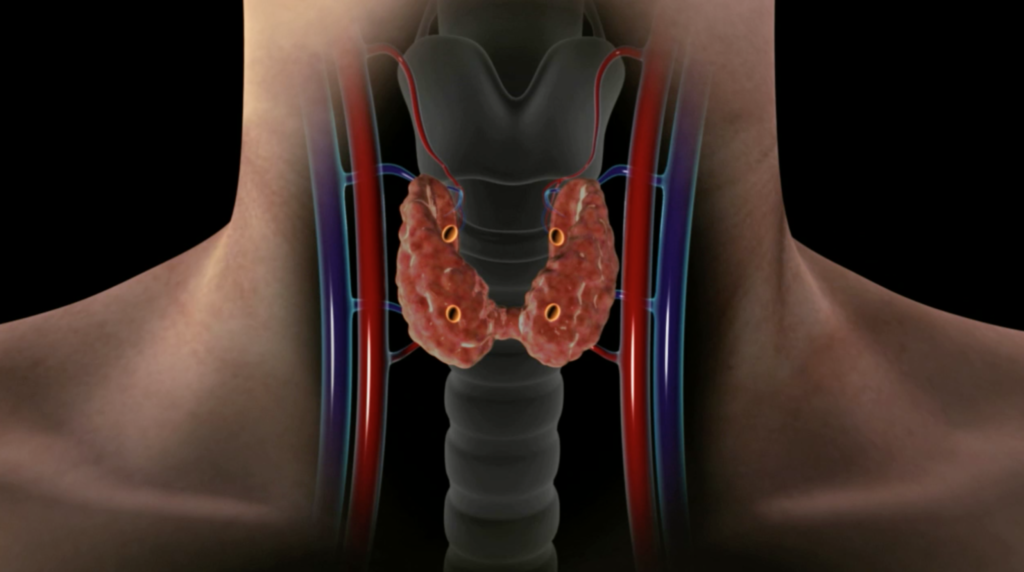Hyperparathyroidism is a condition where one or more of your parathyroid glands produce too much parathyroid hormone (PTH). This hormone regulates calcium levels in your blood and bones. There are three types of hyperparathyroidism:
1. Primary Hyperparathyroidism (PHPT): This is caused by abnormal, unregulated overproduction of PTH, often due to a benign tumour (adenoma) on a parathyroid gland.
2. Secondary Hyperparathyroidism: This occurs when another condition, such as chronic kidney failure or vitamin D deficiency, causes your parathyroid glands to produce more PTH to compensate for low calcium levels.
3. Tertiary Hyperparathyroidism: This develops after long-standing secondary hyperparathyroidism and results in the overproduction of PTH even after the initial cause (like kidney disease) has been treated.

Most people with Primary Hyperparathyroidism do not show symptoms and the condition is often found during routine blood tests showing high calcium levels. However, some people might experience:
Bones: Osteoporosis, bone pain, or fractures.
Stones: Kidney stones due to high levels of calcium in the urine.
Groans: Abdominal pain, nausea, constipation, or pancreatitis.
Moans: Psychological symptoms like depression, memory problems, or confusion.
Diagnosis is based on:
The only curative treatment for Primary Hyperparathyroidism is the surgical removal of the overactive parathyroid gland(s). Surgery is particularly recommended if you have symptoms or if there is evidence of end-organ damage, like kidney stones or osteoporosis. The surgery can be done through:
Traditional surgery where all four glands are examined.
A less invasive option that targets the known abnormal gland(s).
Before surgery, imaging techniques like MRI, Technetium Sestamibi Scanning, 4D CT or Ultrasound are used to locate the overactive gland.
You should see an endocrinologist if:
– You have high calcium levels detected during routine blood tests.
– You experience any of the symptoms mentioned above, particularly if you have a known history of kidney stones or bone fractures.
– Your calcium levels remain elevated despite initial treatment efforts.
Primary Hyperparathyroidism is a condition that can significantly impact your health if left untreated, but with proper management, including surgery or medication, many patients can lead a normal, healthy life. If you suspect you have this condition or if you have been diagnosed with high calcium levels, consult with Dr Humayun to discuss the best course of action.